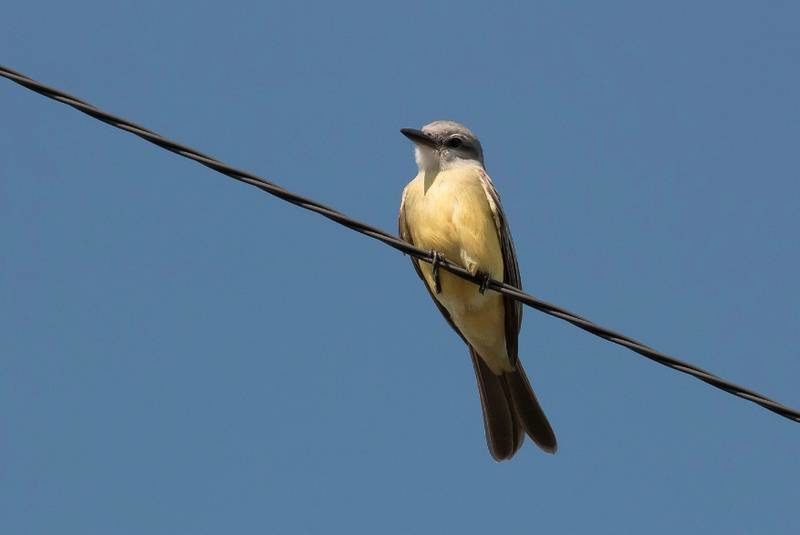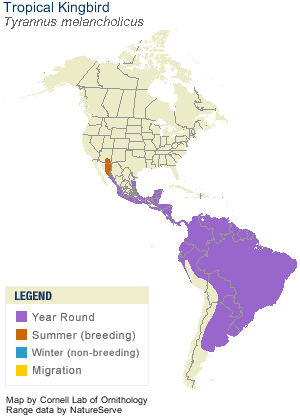
Olsen spotted the bird on the morning of Oct. 24 on the Cleveland Road in Yarmouth County then followed it to the Chebogue Point Road. By afternoon, other birders had joined him, hoping to add this rarity to their lifer list.
The Tropical Kingbird at Chebogue Point represents the first fully confirmed record of the species for Nova Scotia.
Alix d'Entremont, who (along with Murray Newell) represents Shelburne and Yarmouth counties for the Nova Scotia Bird Society, provided information on the typical habitat of the Tropical Kingbird.
The species breed from Arizona south to Argentina and on some Caribbean Islands, predominantly in the lowlands. Its habitat is open and semi-open country with trees, fences and hedges as well as residential areas. The kingbird forages primarily aerially and feeds on flying insects. It perches in open areas where it can view its prey. Once found, it flies off its perch in pursuit of prey then returns to the perch.
"It's often said that birds in foreign habitats have a high likelihood of not surviving," said d'Entremont.
"Research on what occurs to vagrant birds is currently being undertaken on Shelburne County's Bon Portage Island; which should shed some light on this little understood subject."
Observation and documentation are extremely important when a possible rare bird is sighted.
D'Entremont says most birders have cameras and the recent explosion of cheap photography has done wonders for the understanding of the occurrence of birds.




Comment: Interestingly, there was another recent extralimital record of this same species in Tillamook, Oregon